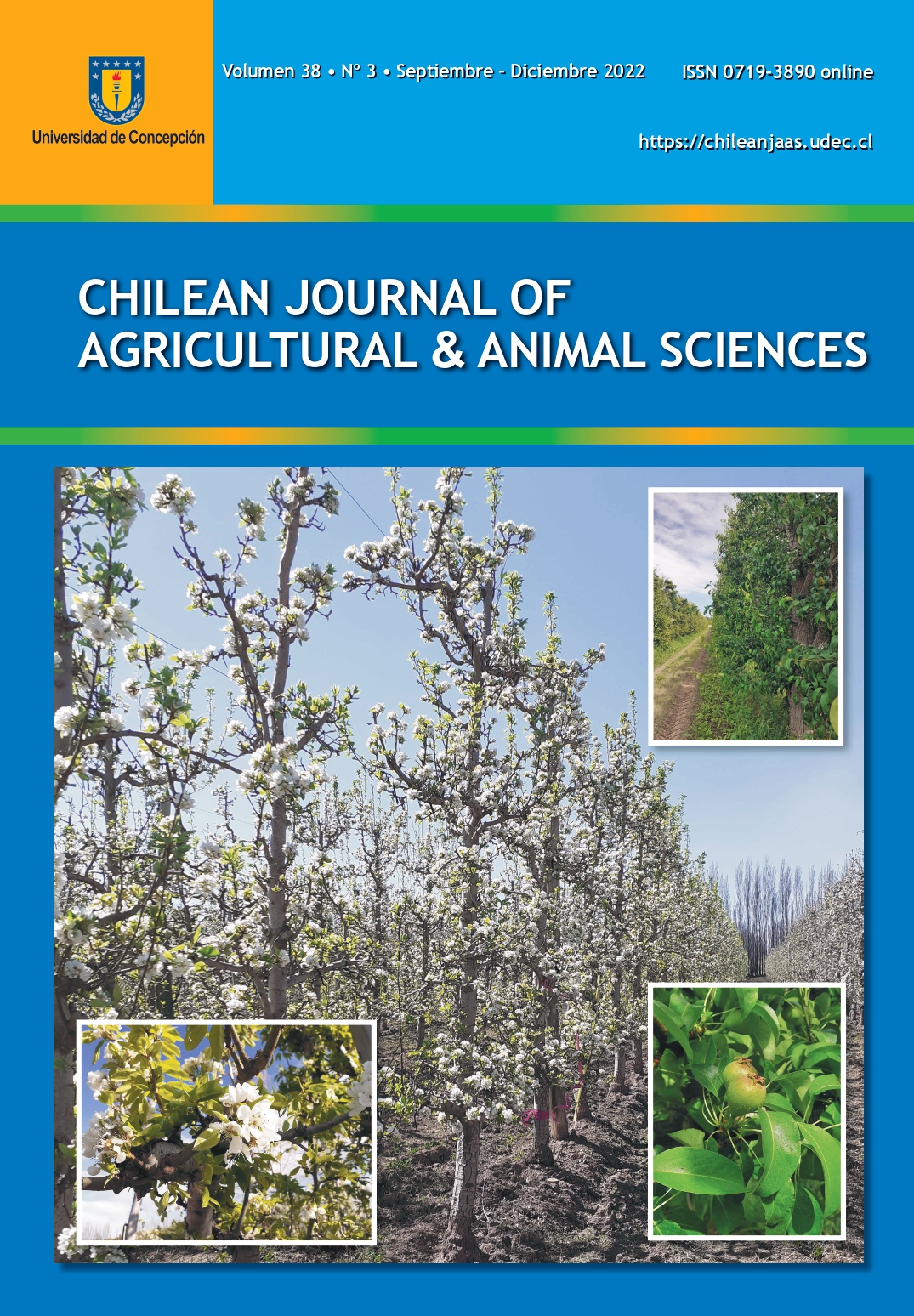FARM DAIRY EFFLUENT APPLICATION ON AN ARGIUDOLL CULTIVATED WITH ALFALFA (Medicago sativa L.): BIOMASS PRODUCTION AND PERSISTENCE
DOI:
https://doi.org/10.29393/CHJAA38-33DPKT10033Resumen
The intensification of dairy production systems has resulted in a higher generation of waste. The aim of this study was to evaluate the impact of different doses of farm dairy effluent (FDE) applied to the soil on aerial biomass production, persistence and chemical composition of alfalfa pastures, in Santa Fe province, Argentina. The study was conducted in four randomized complete blocks with four treatments (FDE doses): 0 m3 ha-1 (T0: without FDE), 82 m3
ha-1 (T1: low rate), 151 m3 ha-1 (T2: medium rate) and 282 m3 ha-1 (T3: high rate). The soil application of FDE increased the total aerial biomass produced (ABP) but reduced the persistence of plants. Total nitrogen (Nt) of alfalfa was significantly higher, but phosphorus (P) concentrations did not vary after the application of FDE to the soil . Ca and Mg concentrations in plants were lower in T3 compared to T0, which can be explained by the imbalance produced in the soil after FDE was applied, presenting high levels of Na, K and NH4-N but low levels of Ca and Mg. Soil application of FDE on alfalfa pastures must be carefully planned in terms of composition and amount to be applied in order to increase biomass production, prevent the decrease in persistence, and control changes in the mineral composition of plants.
Descargas
Publicado
Cómo citar
Número
Sección
Derechos de autor 2022 Pablo Ghiberto, Javier Baudracco, Pablo Heffner, Silvia Imhoff

Esta obra está bajo una licencia internacional Creative Commons Atribución 4.0.







